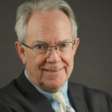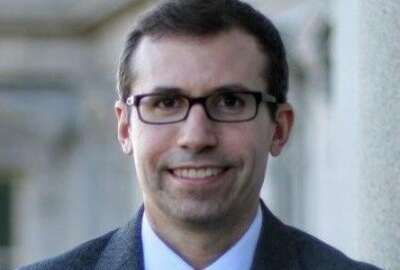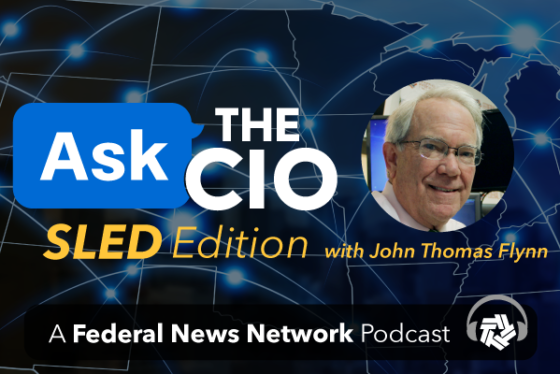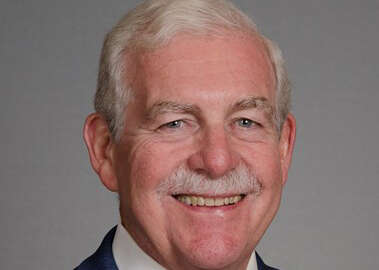
Governor, Lt. Gov. and CIO collaborate on InnovateOhio Program
InnovateOhio calls for more effective data sharing among agencies, an easy-to-use website, a sophisticated identity and access management system and completion of...
InnovateOhio is the Buckeye State’s answer to improving government services through enabling technologies. Under the leadership of Lt. Gov. Jon Husted, InnovateOhio is advancing Gov. Mike DeWine’s administration’s “commitment to leading an aggressive, innovative path towards a better and stronger Ohio,” according to their website.
State Chief Information Officer Ervan Rodgers II was our guest Thursday on Federal News Radio, part of the Federal News Network, where he explained that he plays an integral part in the program.
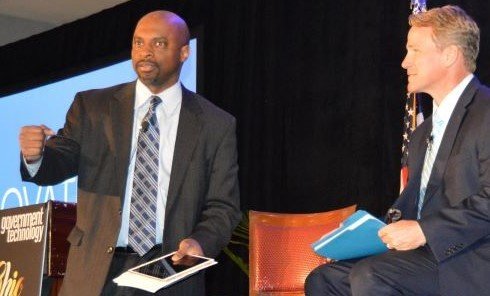
“Our lieutenant governor is the chief innovation officer. And I get the honor and the privilege of partnering with him on the technology front,” Rodgers said. He emphasized the fact that he and Husted have made a concentrated and intentional effort to ensure that they have a very tight-knit, collaborative partnership. The lieutenant governor’s team is focused on the citizen’s experience and Rodgers team is focused on the technology. “I have this catchphrase that I say, that it’s not only the IT shop that I managed directly, but all agency CIOs and their staffs — we are the engines behind InnovateOhio.”
Executive order lays out initiatives
Initial program activities revolve around four points elucidated in the executive order which put the program in motion. The first stipulates that agencies will share data appropriately and securely while the second point ensures that all state websites are using the same technology for look and feel, as well as ease of use.
“There’s nothing worse than going to a website and having to learn how to navigate each and every single time,” Rodgers said.
The third part involves OH|ID, a sophisticated statewide identification and access management portal that Ohio has developed to allow citizens to create a single ID, versus having to create an ID with each state department individually. Citizens can sign in once to get a fishing license, then go over to the Ohio Department of Taxation to pay their taxes without signing in there as well.
The last point involves data center consolidation. The program is looking to complete technology optimization, combining the final seven agencies that are remaining, into Ohio’s primary data center.
“It’s the only thing that has a hard deadline — getting the agencies into the data center — which is March 2020 and we’re tracking very well,” according to Rodgers.
Prior to his role as state CIO, Rodgers was CIO for Dewine when the latter was Ohio’s Attorney General prior to his election last fall. I asked about the differences in the two positions.
Related Stories
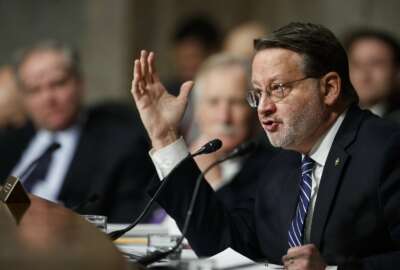
Senate bill to strengthen cybersecurity coordination with state and local governments
As state CIO, things are much different. Everything is much more federated, but he’s still combining and consolidating services from an infrastructure standpoint to increase the state’s buying power and also helping to run enterprise wide applications that span across multiple agencies.
“So the breadth of responsibility is far greater,” he said.
5G mobility and statewide emergency radio network
The state of Ohio is also working with AT&T and Verizon for next generation 5G mobility technology to replace the current 4G LTE network. Their goal is to bring 5G capability to northern Ohio and specifically Cleveland, for cellular services to be available by the end of 2019.
“We’re really excited about the possibilities and we’re encouraging them to be innovative and help make us become the most creative state in the Midwest,” Rodgers said.
Already Ohio has one of the largest emergency radio systems in the country, spanning across almost all of the state’s 88 counties. Rodgers said around 90% of the counties are on this network, which has access to the entire state for first responders.
“It operates all the way down from the state to counties to the locals, the cities; from local fire chiefs to the volunteers where they can pipe in and be on the same radio system, or we can put them onto a dedicated channel,” he said.
Team building: The professional DJ as CIO
We closed our discussion with a look at the lighter side of Rodgers management style. Early in his tenure during a team building exercise he decided it would add more creativity and be more collaborative with some music. And as a professional DJ in addition to being state CIO, Rodgers was right at home. Playing hits from the 1970s-1990s, he asked attendees to talk about their favorite songs and playlists. He emphasized, though, that this exercise was not just frivolous.
“It really gave us the opportunity — I kid you not — it gave us the opportunity to basically come up with more than 300 shovel-ready ideas that we could leverage across multiple state agencies.”
It was not known immediately known if noted “Dancing with the Delaware Stars” and First State CIO James Collins participated.
Copyright © 2025 Federal News Network. All rights reserved. This website is not intended for users located within the European Economic Area.

